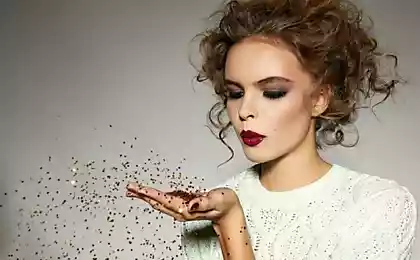621
Silk workaholic
The silkworm (lat. Bombyx mori), or a silk worm - the caterpillar and the butterfly, which play an important economic role in the production of silk. The caterpillar feeds exclusively on the leaves of mulberry (mulberry). A close look - wild silkworm - lives in East Asia in the northern regions of China and southern areas of Primorye Territory in Russia.
13 ph + text
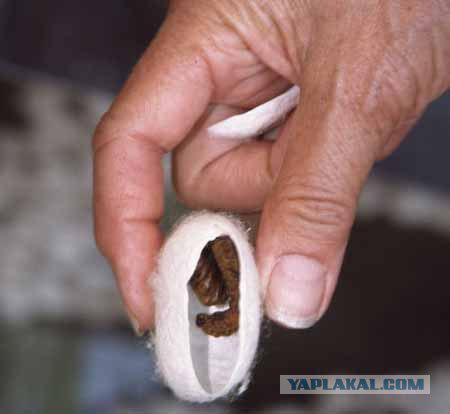
Silkworm - it is the only fully domesticated nesekomoe not occur naturally in the wild state. Females him even "forgotten how to" fly. Adult - thick butterfly with whitish wings span up to 6 cm. The caterpillars of this moth eat only mulberry leaves or mulberry.
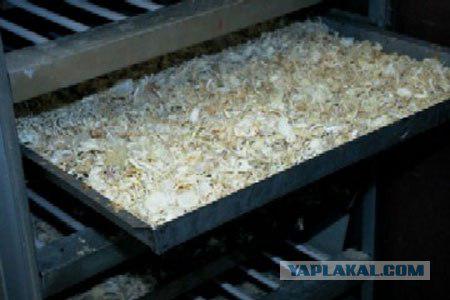
Caterpillars of the silkworm cocoons frizz, shells which consist of continuous silk filament length of 300-900 m.
Caterpillars eat the leaves and the non-stop day and night, because of what is fast growing. Change the color of a caterpillar's head on a dark signals the beginning of molting. After the caterpillar will be held four molts, its body becomes slightly yellow and the skin - more dense, indicating that the caterpillar begins to turn into a chrysalis, obvivaya themselves silk thread. After the pupa stage, gnaws butterfly cocoon and comes out. But to reach this stage, silkworms do not give - cocoons held 2-2 5 hours at about 100 ° C, which kills the caterpillar and cocoon unwinding easier.
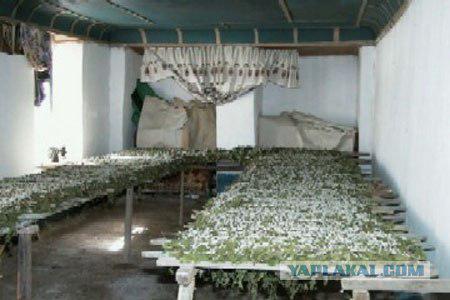
In Korea, fried silkworms eating. They are a good source of protein, but for the European man unaccustomed to the taste. Dried caterpillars infected by the fungus Beauveria bassiana, used in Chinese traditional medicine.
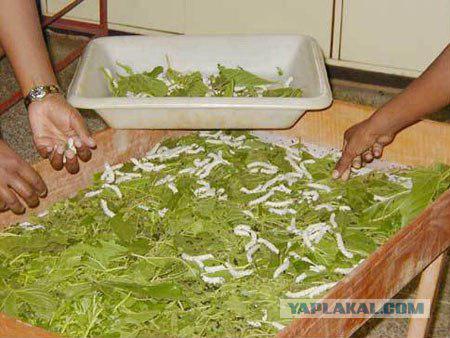
05

06
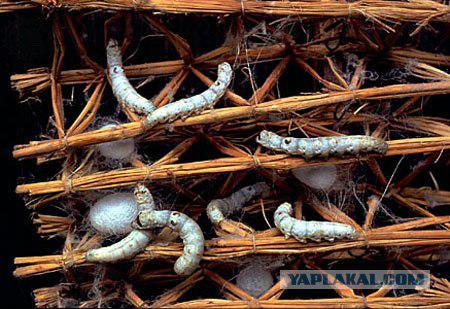
07
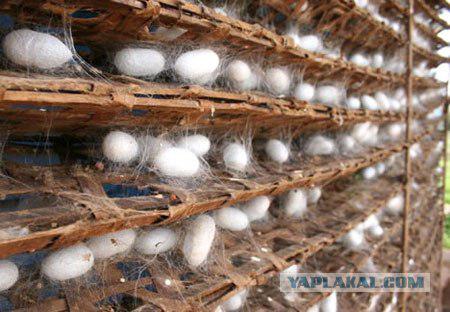
08

09
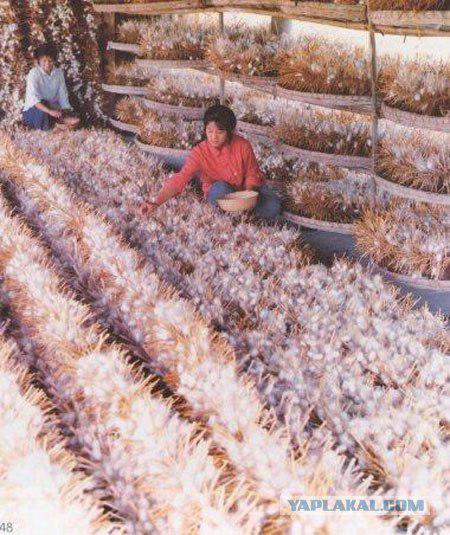
10

11
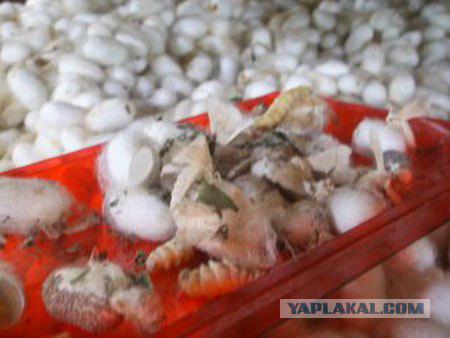
12

via Wikipedia
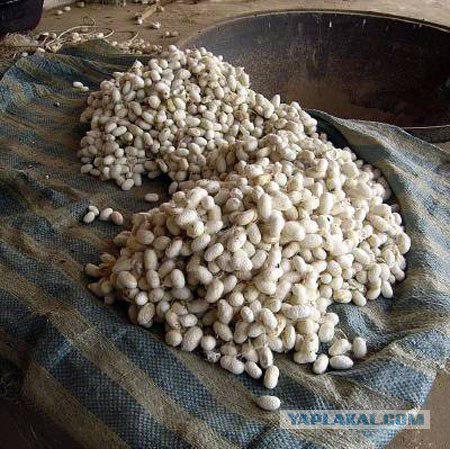
Source:
13 ph + text

Silkworm - it is the only fully domesticated nesekomoe not occur naturally in the wild state. Females him even "forgotten how to" fly. Adult - thick butterfly with whitish wings span up to 6 cm. The caterpillars of this moth eat only mulberry leaves or mulberry.

Caterpillars of the silkworm cocoons frizz, shells which consist of continuous silk filament length of 300-900 m.
Caterpillars eat the leaves and the non-stop day and night, because of what is fast growing. Change the color of a caterpillar's head on a dark signals the beginning of molting. After the caterpillar will be held four molts, its body becomes slightly yellow and the skin - more dense, indicating that the caterpillar begins to turn into a chrysalis, obvivaya themselves silk thread. After the pupa stage, gnaws butterfly cocoon and comes out. But to reach this stage, silkworms do not give - cocoons held 2-2 5 hours at about 100 ° C, which kills the caterpillar and cocoon unwinding easier.

In Korea, fried silkworms eating. They are a good source of protein, but for the European man unaccustomed to the taste. Dried caterpillars infected by the fungus Beauveria bassiana, used in Chinese traditional medicine.

05

06

07

08

09

10

11

12

via Wikipedia

Source:






